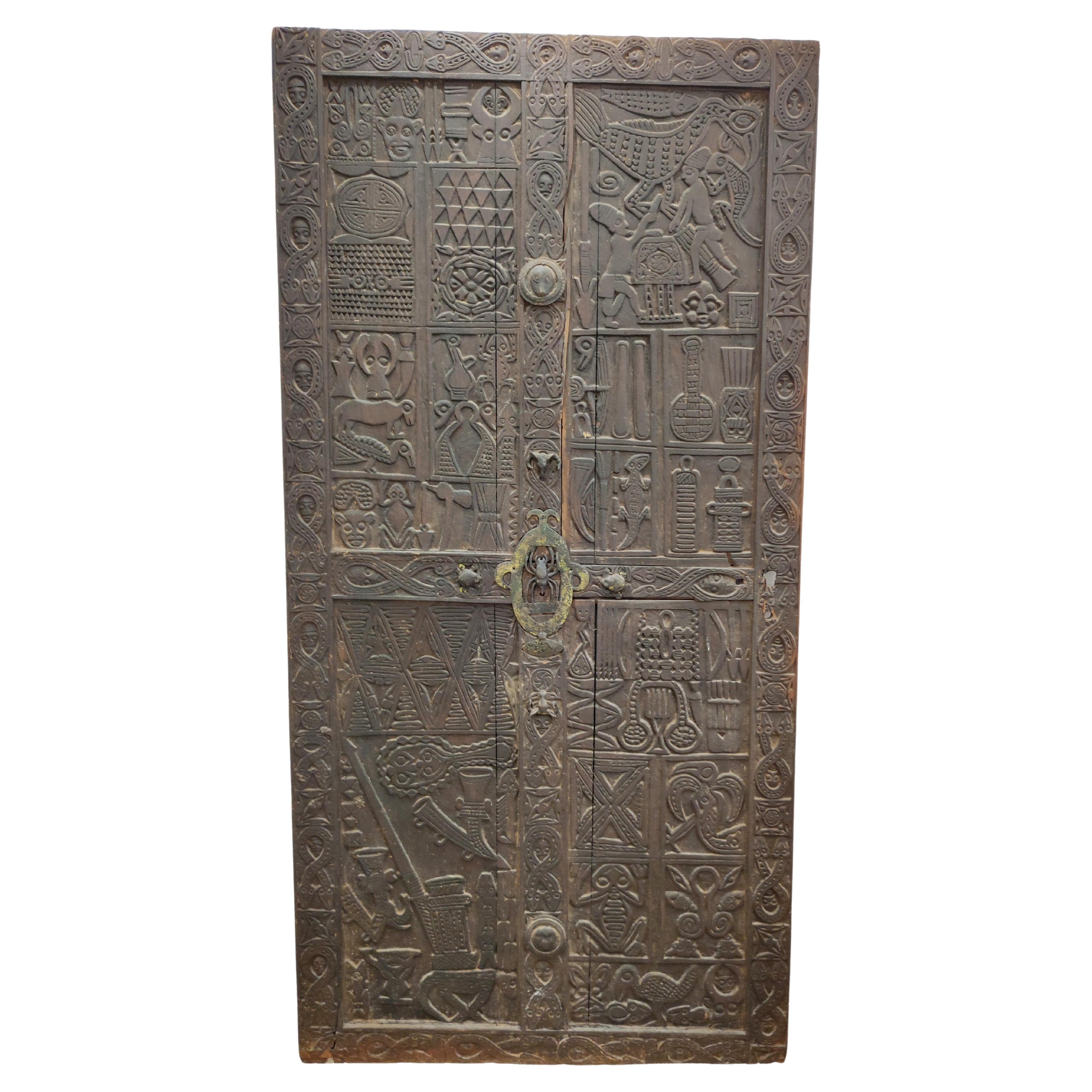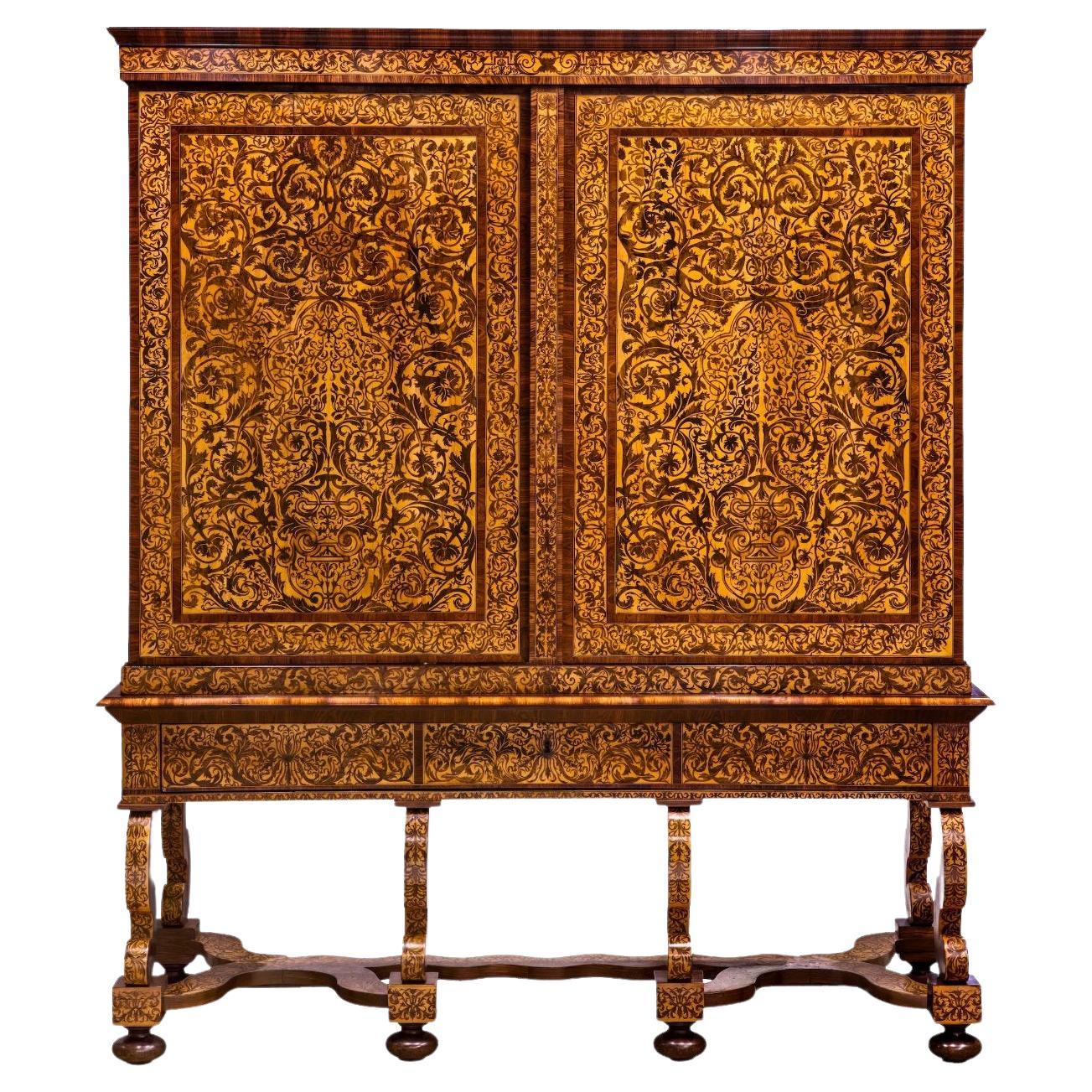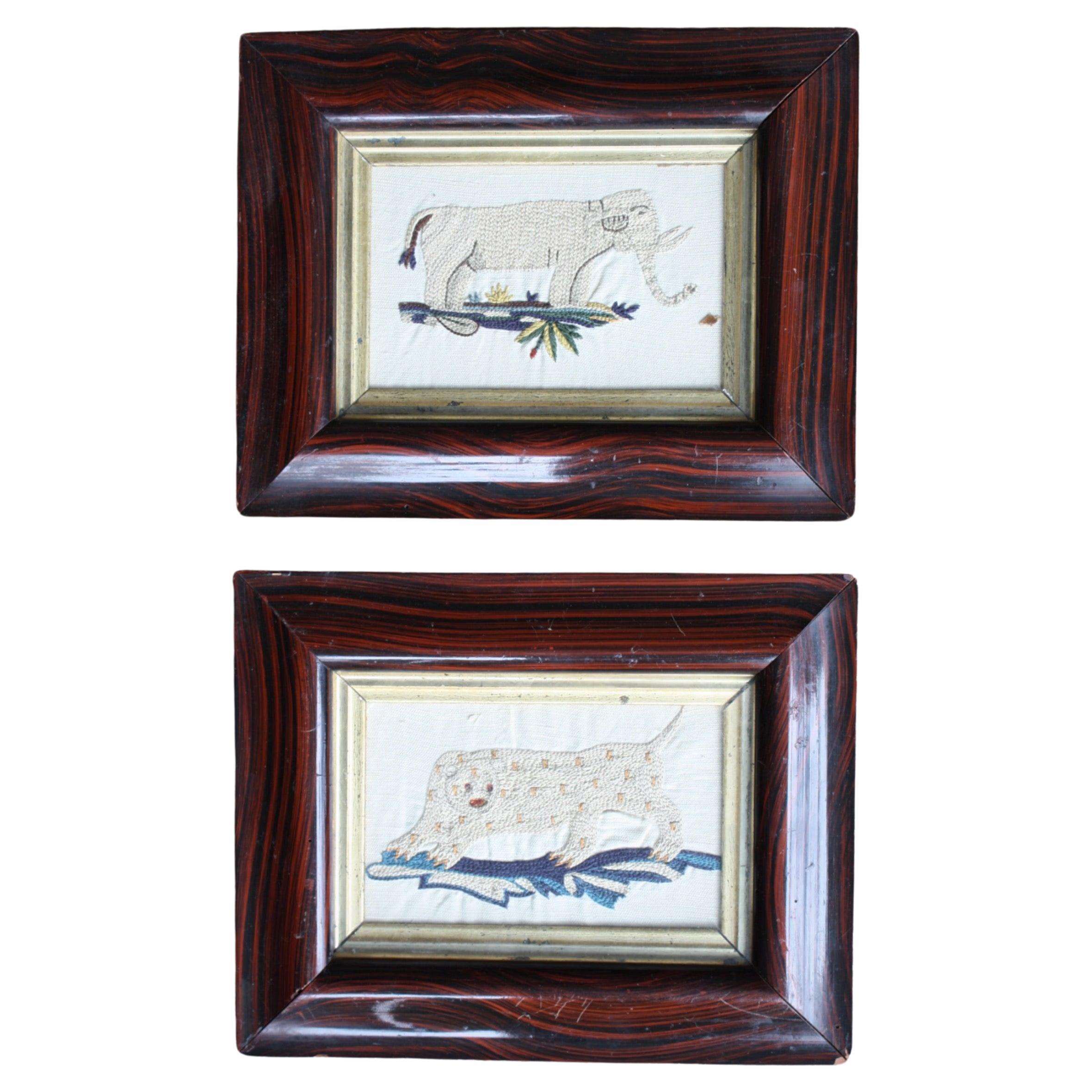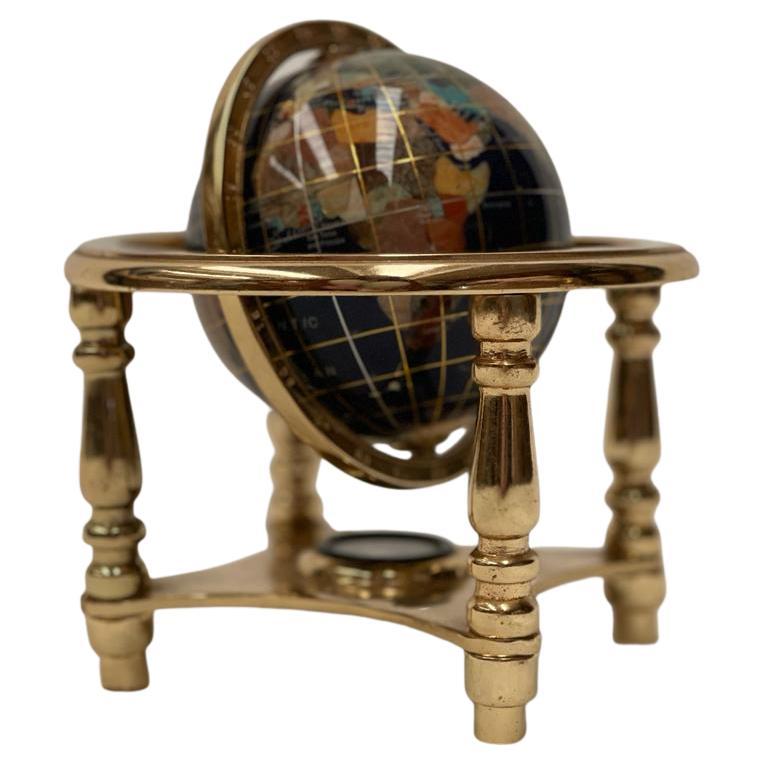Items Similar to Magnificent Silk Ikat Chapan, Uzbekistan, Xix Century
Want more images or videos?
Request additional images or videos from the seller
1 of 8
Magnificent Silk Ikat Chapan, Uzbekistan, Xix Century
About the Item
Ikat Chapan – a man’s uzbek coat – Style Robe with exceptionally rich colour and dynamic pattering. Viewers may become lost in this ikat’s intertwining motifs, but it is colour that truly entrances them. Each unique ikat is the work of an individual who thought deeply about his every choice of colour and form in order to build a harmonious composition. There is always a concern with negative and positive space, for the placement of each pattern and its corollary. We can see the risks that the anonymous ikat designers took and trace their response to each step of the dyeing process. In their way, each ikat is a discovery of a new kind of order,
Ca. 19th century
Ikat weaving has emerged from different parts of the world independently, however it is ikat from Uzbekistan, defined as abrabandi, meaning “bound cloud” which is the most captivating. The word ‘ikat’ comes from the Malaysian word ‘mengikat’ or ‘to tie’, because the loose threads are tied into bundles using grasses or wax-treated cotton to specify where the dye is able to sink in and color the thread. The threads are dyed before they are woven into the textiles.
A characteristic of ikat textiles is an apparent “blurriness” to the design. The blurriness is a result of the extreme difficulty the weaver has lining up the dyed yarns so that the pattern comes out perfectly in the finished cloth. The blurriness can be reduced by using finer yarns or by the skill of the craftsperson. Ikats with little blurriness, multiple colours and complicated patterns are more difficult to create and therefore often more expensive. However, the blurriness that is so characteristic of ikat is often prized by textile collectors.
The Silk Road was a network rather than a single highway, at the heart of which sat what we know today as Uzbekistan, where mountain and steppe meet desert. A succession of empires lost and won by nomadic invaders have left behind a unique melting pot of cultures. Merchants, pilgrims, and envoys were attracted here, not only by trade but also by exchanges in religion, technology and the arts. Where these people met, so too did their ideas and their creativity, one of the most original and visually dramatic examples of Central Asian silk. The clarity, saturation and depth of colour in classical ikats are their greatest artistic strengths. The eye is teased, tickled by the sophistication of the composition and the elegance of the forms.
Measurements: 123 x 122 cm.
- Dimensions:Height: 48.42 in (122.99 cm)Width: 48.03 in (122 cm)Depth: 1 in (2.54 cm)
- Materials and Techniques:
- Place of Origin:Uzbekistan
- Period:
- Date of Manufacture:19th Century
- Condition:
- Seller Location:San Pedro Garza Garcia, MX
- Reference Number:1stDibs: LU3172324337822
About the Seller
3.7
Vetted Seller
These experienced sellers undergo a comprehensive evaluation by our team of in-house experts.
1stDibs seller since 2017
22 sales on 1stDibs
Typical response time: 18 hours
- ShippingRetrieving quote...Ships From: San Pedro Garza Garcia, Mexico
- Return PolicyA return for this item may be initiated within 3 days of delivery.
More From This SellerView All
- Magnificent Chimu Precolumbian Tapestry with 21 Multicolor Royal AttendantsLocated in San Pedro Garza Garcia, Nuevo LeonComplete and magnificent Chimu Pre-Columbian Tapestry with 21 multicolor Royal attendants and fringe. No restoration, professionally cleaned. Overall excellent condition.Category
Antique 15th Century and Earlier Peruvian Pre-Columbian Antiquities
MaterialsTapestry
- Beautiful Ikat Munisak, Uzbekistan, 19th CenturyLocated in San Pedro Garza Garcia, Nuevo LeonA beautiful Ikat Munisak – a woman’s uzbek robe – in traditional pomegranate design symbolizing fertility. It has a square patch in Magenta with a flower mo...Category
Antique 15th Century and Earlier Asian Antiquities
MaterialsCotton
- Extremely Rare Pre-Columbian Chimu Gauze Poncho Textile, Peru, 1000-1450 ADLocated in San Pedro Garza Garcia, Nuevo LeonChimu brown gauze shirt with multiple red and white fringe lines forming V designs like the one around the neck, with very rarely seen sleeves and border fringe in the same material.Category
Antique 15th Century and Earlier Peruvian Pre-Columbian Tapestries
MaterialsTextile
- Pre-Columbian Nazca Stepped Textile Poncho, Nazca Peru, 200-400 ADLocated in San Pedro Garza Garcia, Nuevo LeonNazca Tunic/Poncho of stepped design and fringe in yellow ocher, burgundy and brown. Perfect condition, museum quality.Category
Antique 15th Century and Earlier Peruvian Pre-Columbian Tapestries
MaterialsTextile
- Pre-Columbian Inca Mantle with 16 Figures, Peru, 1476-1534 ADLocated in San Pedro Garza Garcia, Nuevo LeonInca Mantle with 16 figures in cubist form with multi-color fringes. This pieces with a Certificat de Bien Culturel from France. For the Incas finely worked and highly decorativ...Category
Antique 15th Century and Earlier Peruvian Pre-Columbian Antiquities
MaterialsTextile
- Pre-Columbian Nazca Textile, Stepped Zig-Zag Design, Nazca Peru 200-400 ADLocated in San Pedro Garza Garcia, Nuevo LeonComplete Pre-Columbian Nazca textile with stepped zig-zag design in yellow, ochre red, and brown/black shades with yellow fringes.Category
Antique 15th Century and Earlier Peruvian Pre-Columbian Antiquities
MaterialsTextile
You May Also Like
- Spectacular Bamoun door, end of XIX°century from Sultan NJOYA Palace.Located in Saint-Ouen, FRSpectacular Bamoun ( Cameroon)door end of XIX°century from Sultan NJOYA Palace. It would be the door to the sultan's bedroom. Very fine sculpting work with Royal attributes like the...Category
Antique Late 19th Century Cameroonian Other Antiquities
MaterialsWood
- A magnificent Dutch marquetry cabinet on stand, by Jan van Mekeren (1658-1733)By Jan van MekerenLocated in Amsterdam, NLA magnificent Dutch marquetry cabinet on stand, by Jan van Mekeren (1658-1733) possibly made for William III and Mary of England Amst...Category
Antique 17th Century Dutch Antiquities
MaterialsKingwood, Oak, Walnut, Holly
- Pair of Early 19th Century Silk Embroidery Folk Art Animals Elephant & LeopardLocated in Lowestoft, GBA exceptional pair of hand embroidered silk animals (leopard & elephant), housed in faux rosewood frames and original marble paper backings. Very much in the naive, folk art aesth...Category
Antique Early 19th Century British Georgian Antiquities
MaterialsTextile, Silk, Pine
- Late 19th Century Silk Ikat Uzbekistan Tribal WeavingLocated in New York, NYGorgeous handwoven silk Ikat weaving in rich magenta, gold and purple color, circa late 19th-early 20th century, Uzbekistan, Central Asia, on the ancient...Category
Antique Late 19th Century Uzbek Tribal Tribal Art
MaterialsSilk
- 20th CenturyLocated in Cantù, ITSmall globe with compass. Refined and with attention to detail in the slightest detail. Created from brass, crystal and glass. Designed by Mice Versailles.Category
Antique 19th Century Antiquities
MaterialsCrystal, Brass
- 19th Century Rawhide QuirtLocated in Coeur d'Alene, IDRawhide braided quirt with lead filled handle. Nice patina. Period: Last quarter 19th century Origin: Montana Size: 17" plus 12" flapper. Family Owned ...Category
Antique Late 19th Century American Sports Equipment and Memorabilia
MaterialsHide





